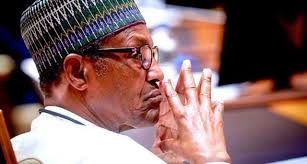The Minister of Finance, Zaina Ahmed has revealed that the federal government spent a whopping N2.02 trillion to service debts within the first six months of 2021 (January-June).

The Cable reports that the Minister disclosed this when she spoke at the 2022- 2024 2022-2024 medium-term expenditure framework/ fiscal strategy paper (MTEF/FSP) committee interactive session in Abuja on Monday, August 16.
Ahmed said the federal government’s retained revenue amounted to 67.3 percent of the target.
Last year, out of total revenue of N3.42 trillion, the federal government spent N3.34 trillion on debt servicing – implying that for every N100 earned as revenue, N97 was spent on debt servicing.
Given the breakdown, the minister said oil revenue was N492.44 billion, representing 49 percent performance, while the non-oil revenue totalled N778.18 trillion at 104.5 percent performance, according to the News Agency of Nigeria (NAN). She added that companies income tax(CIT) and value-added tax (VAT) collections are ahead of the budget targets with N397.02 billion and N129 billion.FG spent N2trn on debt servicing in six monthsb- Minister of Finance, Zainab Ahmed
She said this represents 116.5 percent and 108.2 percent targets for the period.
Ahmed said that Customs collection was N234.02 billion at 92.1 percent of target, adding that other revenues amounted to N922.09 billion — out of which independent revenue was N558.13 billion.
On the expenditure performance, the Minister said N5.81 trillion, representing 92.4 per cent of the budget had been spent, adding that this excludes GOEs and project-tied debt expenditure.
“Of the expenditure, N2.02 trillion was for debt servicing, which is 35 percent of the Federal Government expenditures and N1.795 trillion for personnel cost. This is including pension at 30.9 percent of Federal Government revenue.”she said
She noted that as of June, N1.3 trillion, which represented 84.7 percent, had been released for capital expenditure.
The finance minister said that the country faced serious economic challenges in 2020, with the microeconomic environment significantly disrupted by the COVID19 pandemic but that the economy made a tepid recovery in the first quarter of 2021.









No comments:
Post a Comment